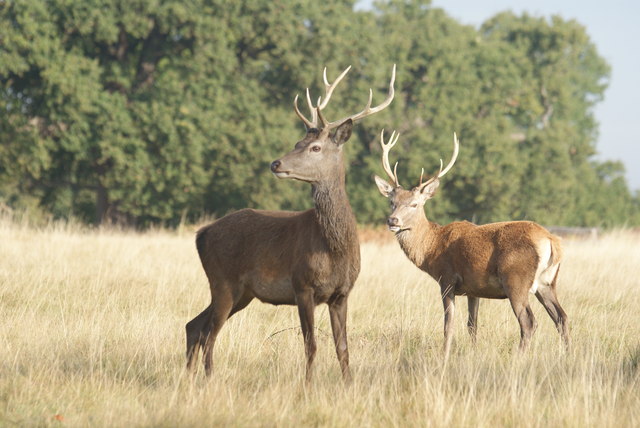Wildlife & Safety
 Richmond Park is a National Nature Reserve and deer park with 630 Red and Fallow deer roaming freely since 1637. The deer have played a major role in the park's history and have shaped the landscape too.
Richmond Park is a National Nature Reserve and deer park with 630 Red and Fallow deer roaming freely since 1637. The deer have played a major role in the park's history and have shaped the landscape too.
The deer in Richmond Park and Bushy Park are wild animals and can be unpredictable.
The Royal Parks have more information on wildlife in Richmond Park here.
In addition you can find out moreinformation on the nature in the parks from the Friends of Richmond Park
For your safety, please keep at least 50 metres away from the deer at all times and don’t touch, feed or attempt to photograph the deer at close range.
Be aware of your surroundings, especially during the rutting season (September - October) and the birthing (May - July) season. More information can be found here
12 Things you should know in the deer rutting season
Oak Processionary Moth Safety Advice: Summer, is the time of year when the caterpillars of this invasive Moth are on the move and may be found low on the trunk and branches of oak trees, where they may also form webbed nests. The hairs of the caterpillars carry a toxin which can be a threat to human health, causing skin rashes, eye irritation and respiratory problems. The Royal Parks aim to minimise the risk to the public and full information can be found here.
Ticks and Lyme Disease: Lyme disease or Lyme borreliosis, is a bacterial infection spread by infected ticks. Human infection is uncommon, because only a small proportion of ticks have the infection. Ticks can survive in many places but prefer slightly moist, shady areas such as bracken, bushes and leaf litter. They can be found in both long and short grass. Ticks can't jump or fly, so they have to wait until an anima (or human) brushes past to attach to their skin. The tick population peaks between late spring and autumn (April to October). Full information can be found here.
You can download a leafelt on ticks here
Help Phones for the Police are located at various points around the park (check park maps for locations; Roehampton, Richmond and Kingston Gates as well as Holly Lodge and Isabella Plantation).